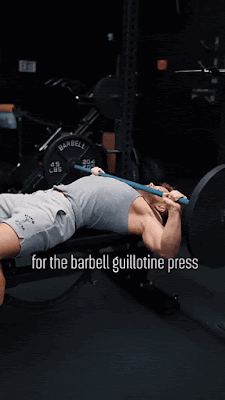Beginner’s Guide to Chest Workouts at Planet Fitness
If you’re new to strength training and looking to build a solid foundation for your chest workouts, Planet Fitness offers a variety of equipment and a welcoming environment to help you get started. In this guide, we’ll break down an easy-to-follow beginner chest workout plan designed specifically for Planet Fitness, complete with tips for form, progression, and maximizing your results.
Understanding Chest Anatomy
Before diving into your workout, it’s essential to understand the muscles you’re targeting:
- Pectoralis Major:
- Clavicular Head (Upper Chest): Adds fullness to the upper chest.
- Sternal Head (Middle Chest): The bulk of the chest mass.
- Pectoralis Minor: Assists with stabilizing shoulder movements.
- Serratus Anterior: Engages during pressing movements and stabilizes the scapula.
Beginner-Friendly Chest Workout at Planet Fitness
This beginner chest workout is designed to help you learn proper form and build strength progressively. Perform this workout 1-2 times per week.
1. Chest Press Machine
- Why It Works: This machine targets the middle chest while providing guided support for beginners.
- How to Perform:
- Adjust the seat height so the handles are in line with your chest.
- Grip the handles with your palms facing forward.
- Push the handles forward until your arms are fully extended, then slowly return to the starting position.
- Sets/Reps: 3 sets of 12-15 reps.
- Pro Tip: Avoid locking out your elbows at the top to maintain tension on your chest.
2. Incline Chest Press Machine
- Why It Works: Targets the upper chest for a well-rounded appearance.
- How to Perform:
- Adjust the bench to a slight incline (30-45°).
- Grip the handles and push upward at a diagonal angle.
- Lower the weight back down slowly to feel the stretch in your upper chest.
- Sets/Reps: 3 sets of 10-12 reps.
- Pro Tip: Focus on controlled movements to avoid engaging your shoulders excessively.
3. Cable Chest Fly
- Why It Works: Isolates the chest muscles and provides a great stretch.
- How to Perform:
- Set the cable pulleys to chest height.
- Stand in the middle, grab the handles, and step forward slightly.
- Pull the handles together in an arc motion, squeezing your chest at the peak.
- Return slowly to the starting position.
- Sets/Reps: 3 sets of 12-15 reps.
- Pro Tip: Maintain a slight bend in your elbows throughout the movement.
4. Push-Ups (Bodyweight)
- Why It Works: Enhances overall chest strength and endurance.
- How to Perform:
- Place your hands slightly wider than shoulder-width apart.
- Lower your chest to the floor, keeping your body in a straight line.
- Push back up to the starting position.
- Sets/Reps: 2-3 sets of 10-15 reps.
- Pro Tip: Modify by doing push-ups on your knees if needed.
Tips for Success
- Warm Up: Spend 5-10 minutes on light cardio and dynamic stretches before starting your workout.
- Focus on Form: Use lighter weights initially to master the correct technique.
- Progressive Overload: Gradually increase the weight or reps as you build strength.
- Recovery: Allow at least 48 hours between chest workouts for optimal recovery.
- Stay Hydrated: Drink plenty of water before, during, and after your session.
Common Mistakes to Avoid
- Skipping Warm-Up: Increases the risk of injury.
- Using Excessive Weight: Can compromise form and lead to poor muscle engagement.
- Neglecting Rest: Over-training can stall your progress and lead to fatigue.
- Not Engaging the Chest: Focus on the chest muscles rather than relying on your arms or shoulders.
Conclusion
Starting a chest workout routine at Planet Fitness is an excellent step towards achieving a stronger, more defined upper body. With the right exercises and proper technique, you can confidently build a solid foundation and see steady progress over time. Remember to be patient and consistent, and you’ll be on your way to achieving your fitness goals.
References
- Schoenfeld, B. J. (2010). The Mechanisms of Muscle Hypertrophy and Their Application to Resistance Training. Journal of Strength and Conditioning Research.
- American Council on Exercise (ACE) - "Beginner’s Guide to Chest Training."
- Contreras, B., & Beardsley, C. (2015). Effective Training Techniques for Beginners. NSCA Journal.








.gif)


.jpg)

